Eggplant, also known as Solanum melongena, is a plant belonging to the Solanaceae family. It is closely related to tomatoes, potatoes, coconuts, and eggfruit, and originated from South India and Sri Lanka.
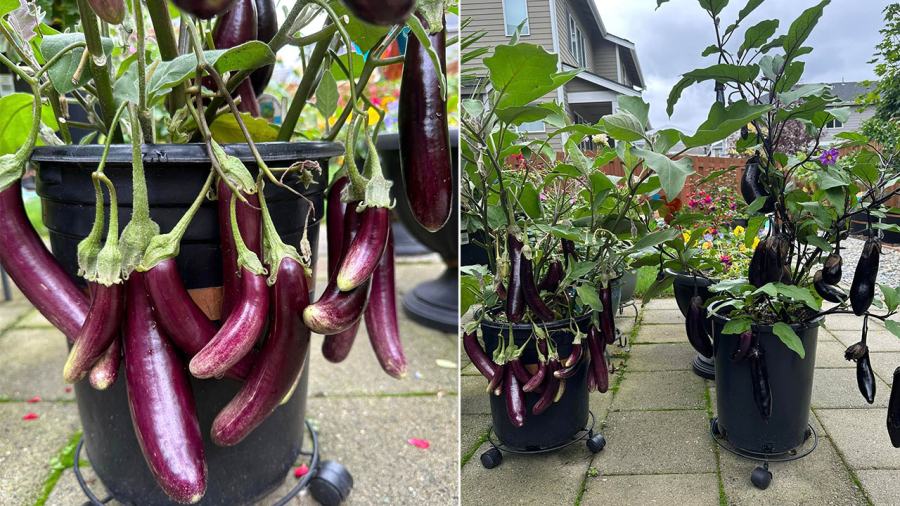
Eggplant is an annual plant with a woody herbaceous stem. It grows to a medium height of about 40-150 cm. The stem of the plant is usually thorny, with many branches. Compared to other types of eggplant, the leaves of the eggplant are larger, with a dark green color and prominent veins. When touched, the leaves have a rough texture.
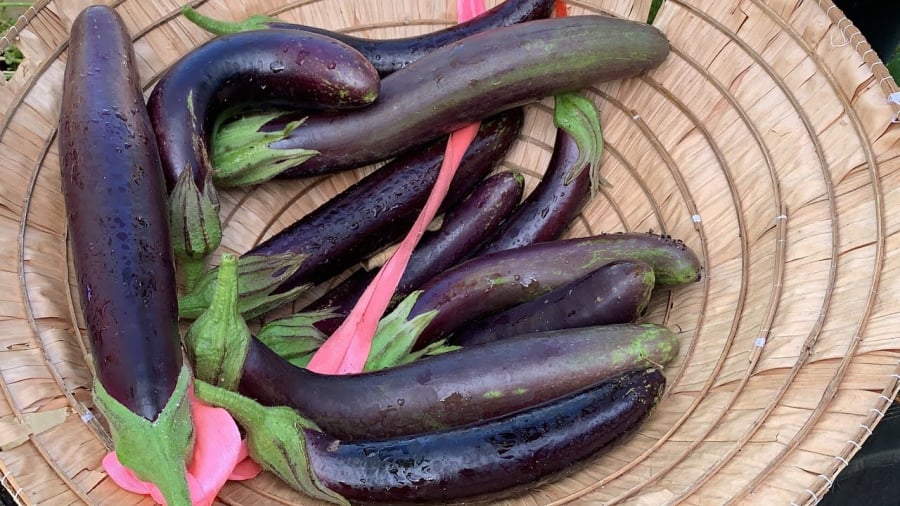
The flowers of the eggplant are white or pale purple, with five petals and yellow stamens. When the flowers are pollinated, they produce plump eggplants with fleshy pulp. The size and shape of the eggplants vary depending on the different varieties, and this is the only part of the eggplant that is used.
How to grow eggplants in a pot/foam box
(1) Prepare planting tools, soil, and seeds
Planting tools
You can use buckets, pots, trays, or foam boxes that are already available at home or empty spaces in the garden to grow eggplants. Make sure there are drainage holes at the bottom of the container. However, the pot or foam box should be at least 20-25cm tall and at least 30cm wide.
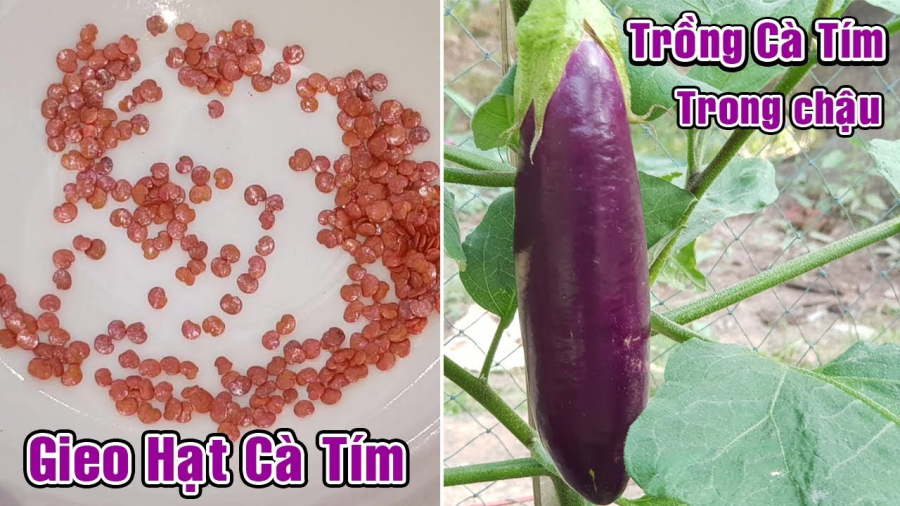
Soil
Eggplants are suitable for growing in loose soil, rich in organic matter, easy to drain, and with a pH of about 6. You can buy ready-made soil or mix the soil with decomposed cow dung, chicken manure, earthworm compost, rice husk, coconut fiber, etc.
Seeds
You can buy seeds at agricultural stores near your house or supermarkets.
(2) Soak, sow, and plant seeds
The eggplant seeds have a hard and thick shell, so before sowing, you need to soak them in cold water for 24-30 hours. Then, remove them and soak them in warm water at a temperature of about 50 degrees Celsius for 1 hour. This process softens the seed coat to stimulate germination and helps to eliminate fungal diseases. After soaking, wrap the seeds in moist fabric until they crack before sowing.
Sow 2-3 seeds in each cell of a seed tray or pot. Then cover with a thin layer of soil and water gently with a spray nozzle.
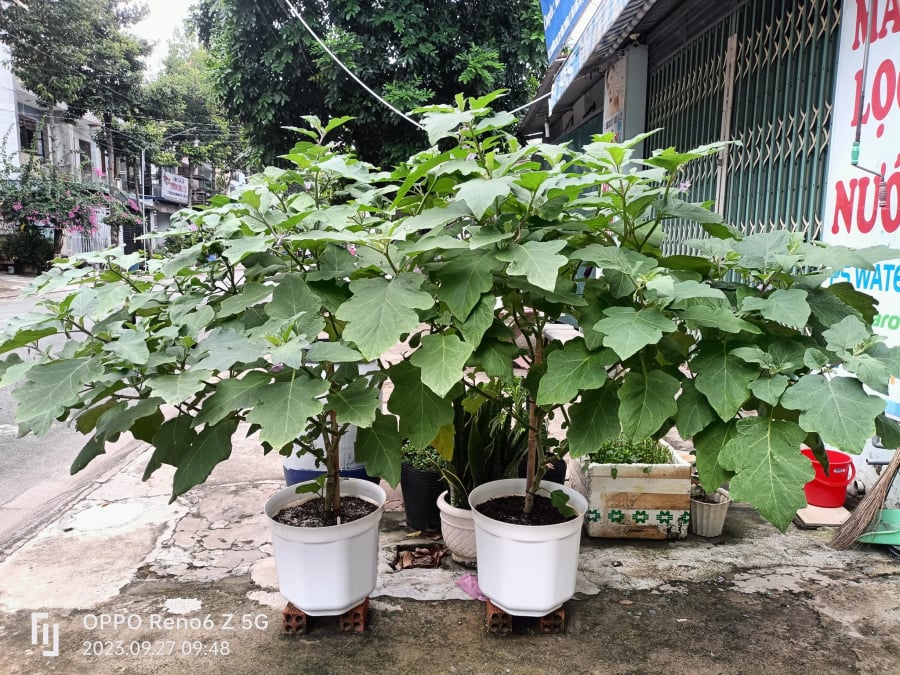
When the seedlings in the tray have 5 to 6 true leaves and are about 6-8cm tall, select the healthiest and strongest plants to transplant into pots or foam boxes. After planting, water the plants and cover them for 1 week.
(3) Care
Eggplants prefer a lot of water, so you need to water them daily in the beginning. Note: Water the plants with the necessary moisture for good growth. Especially during flowering and fruiting, do not let the soil surface dry out or lack water, as it will reduce the flowering and yield of the eggplants.
After one week of planting the seedlings, apply organic fertilizers such as cow dung, earthworm compost, chicken manure, goat manure, or organic fertilizers. Apply the fertilizer every 10-12 days.
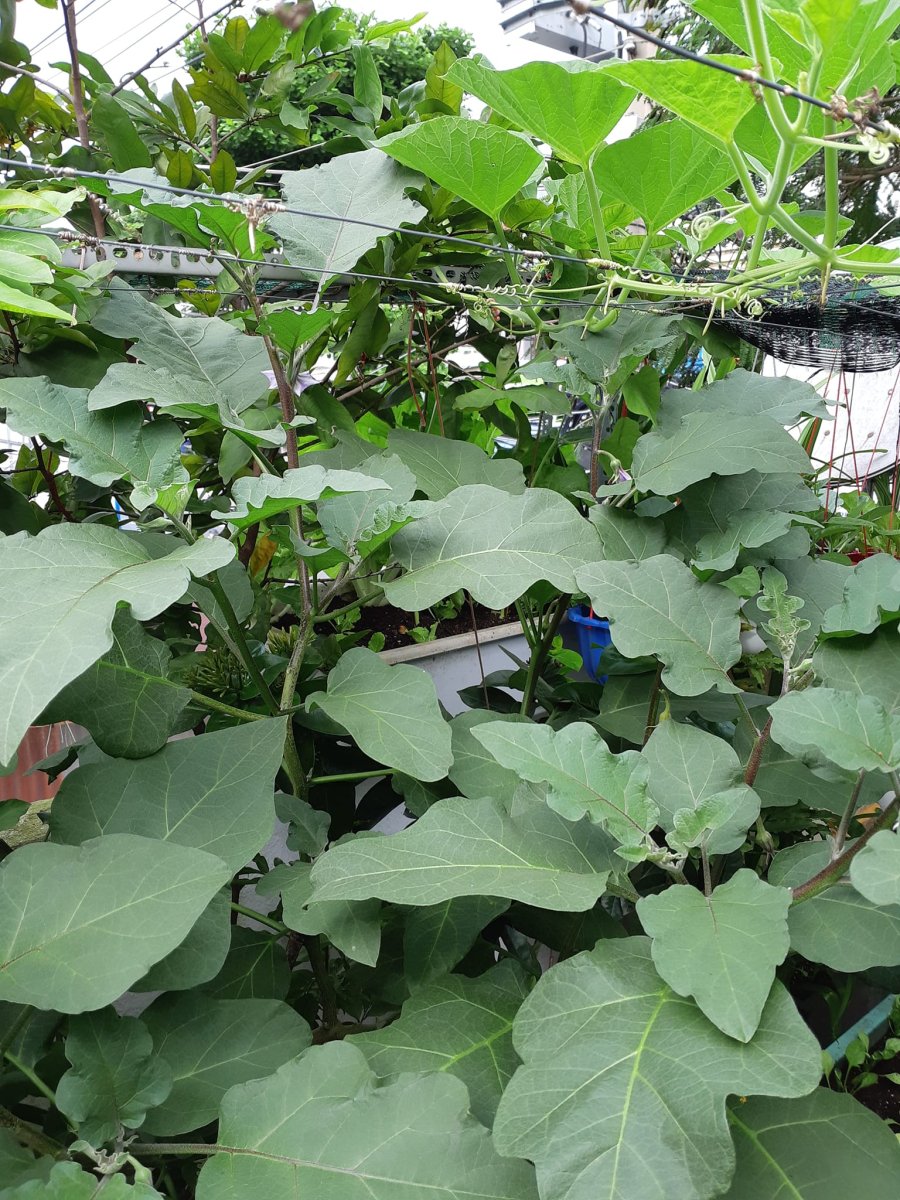
Harvest
Eggplants can be harvested for the first time after 60-70 days of planting. Do not harvest the fruits when they are too mature, as they will not taste good. The harvesting time depends on how well the plants are cared for.
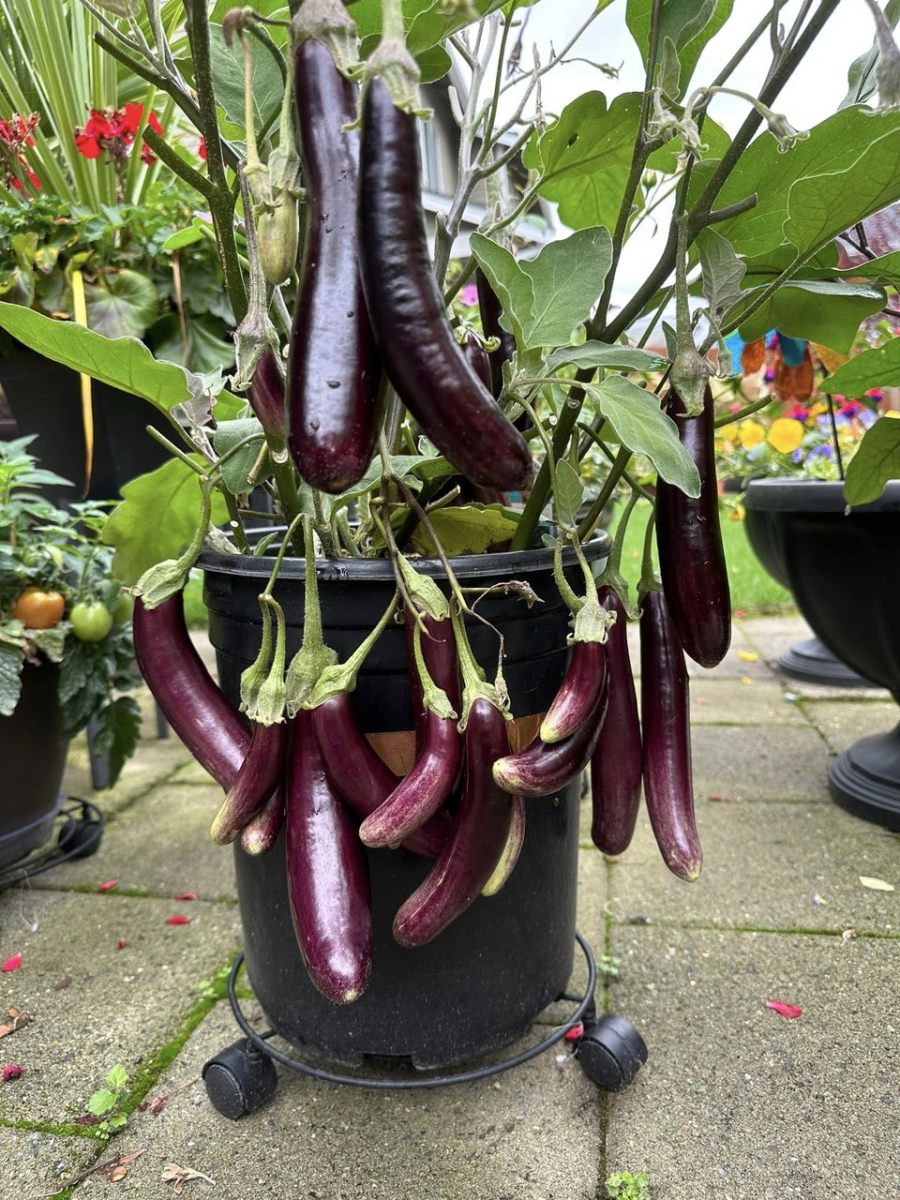
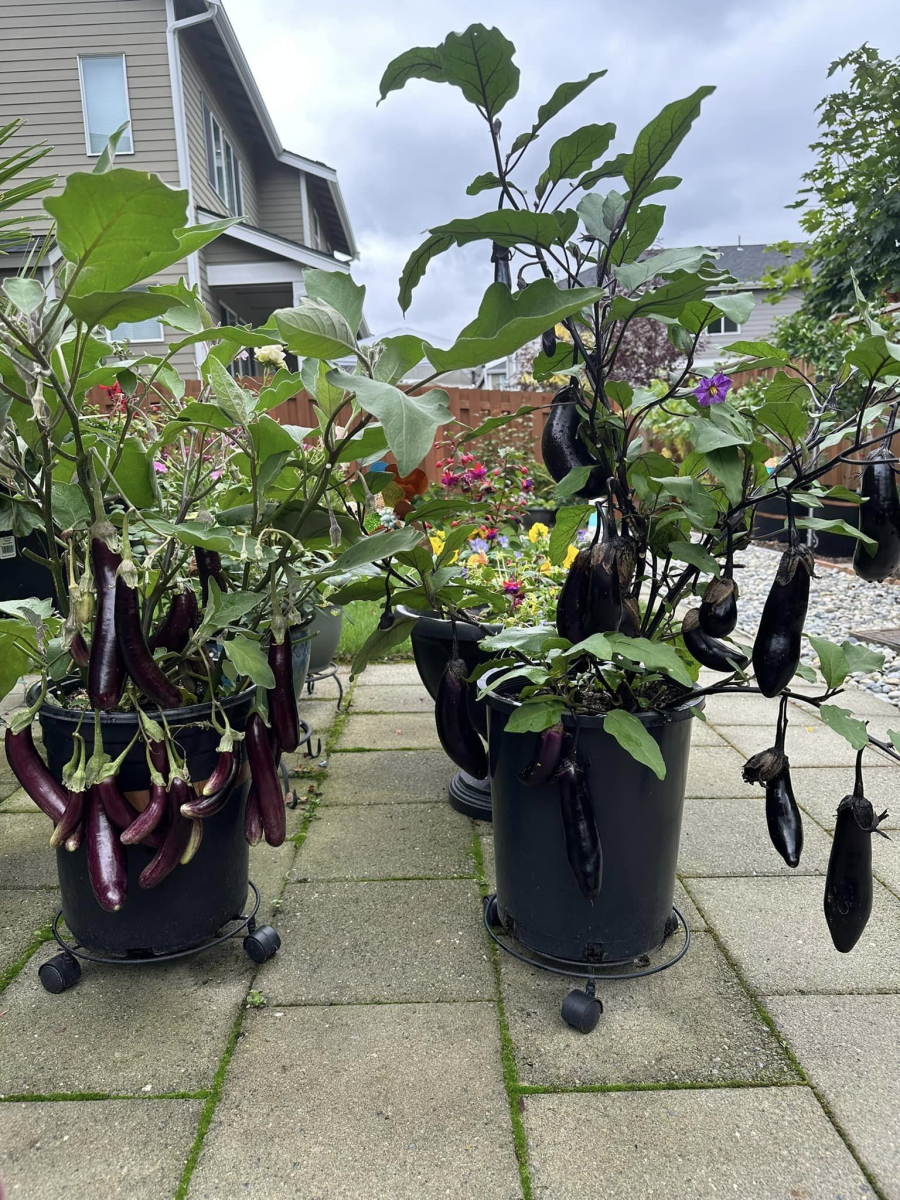

You can also select large, long, beautiful, and disease-free fruits as seeds for the next season.

































